A breaf introduction to Prometheus
Prometheus has a time series database
Prometheus Query Language (PromQL)
Data model
Format:
<metric name>{<label name>=<label value>, ...}eg:
api_http_requests_total{method="POST", handler="/messages"}Types of metrics
Counter, Gauge, Histogram, Summary
Counter
A counter is a cumulative metric that represents a single monotonically increasing counter whose value can only increase or be reset to zero on restart.
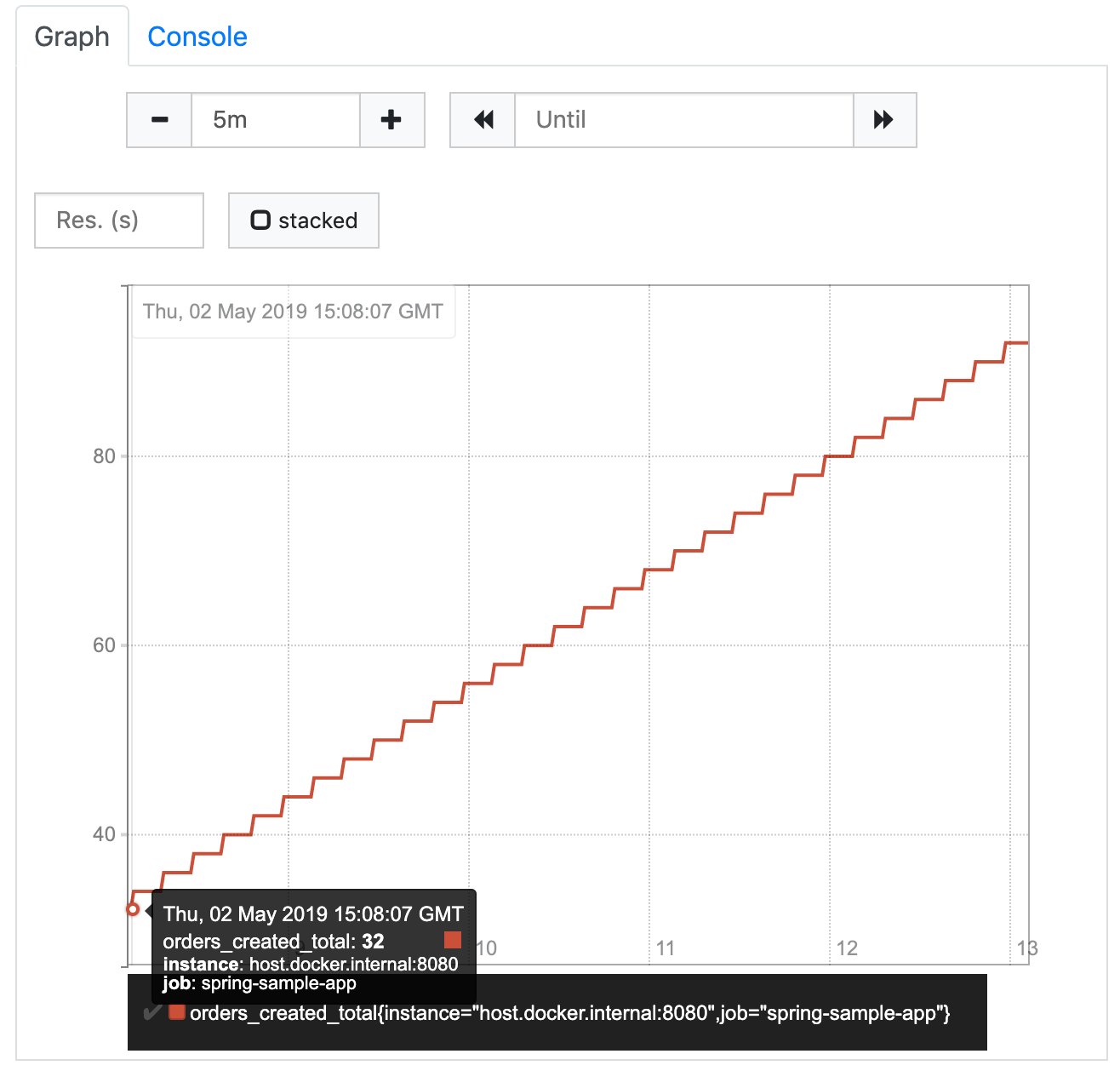
Gauge
A gauge is a metric that represents a single numerical value that can arbitrarily go up and down.

Histogram
A histogram samples observations (usually things like request durations or response sizes) and counts them in configurable buckets. It also provides a sum of all observed values.
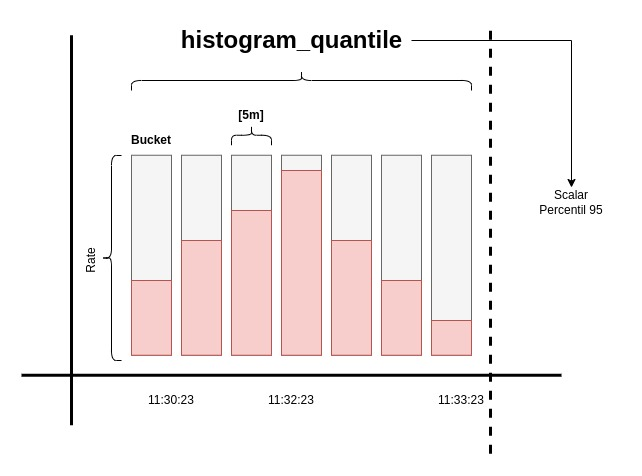
Summary
Similar to a histogram, a summary samples observations (usually things like request durations and response sizes). While it also provides a total count of observations and a sum of all observed values, it calculates configurable quantiles over a sliding time window.
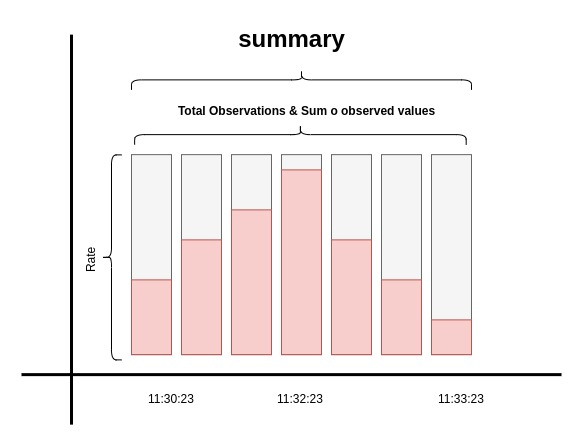
Expression language data types
| Var type | Description |
|---|---|
| String | a simple string value; currently unused |
| Scalar | a simple numeric floating point value |
| Range vector | a set of time series containing a range of data points over time for each time series |
| Instant Vector | a set of time series containing a single sample for each time series, all sharing the same timestamp |
Scalar & Instance Vector & Range Vector
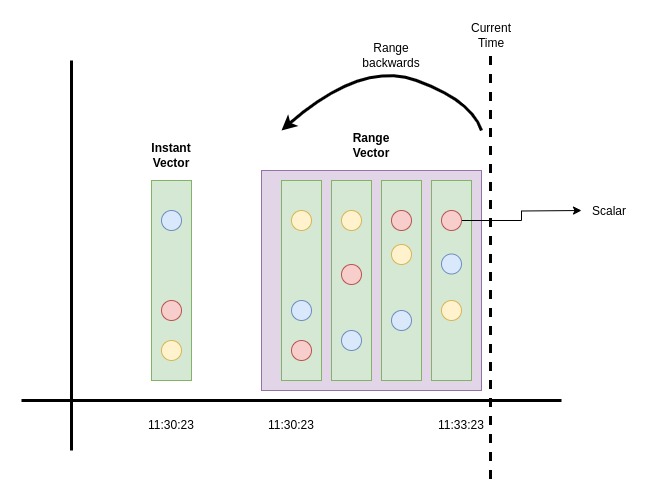
Range Vector Selectors
ms- millisecondss- secondsm- minutesh- hoursd- days - assuming a day has always 24hw- weeks - assuming a week has always 7dy- years - assuming a year has always 365d
Label and Range Filter
The Operators
The following binary arithmetic operators exist in Prometheus:
| Operator | Description |
|---|---|
| + | addition |
| - | subtraction |
| * | multiplication |
| / | division |
| % | modulo |
| ^ | power/exponentiation |
Comparison binary operators
The following binary comparison operators exist in Prometheus:
| Comparison | Description |
|---|---|
| == | equal |
| != | not-equal |
| > | greater-than |
| < | less-than |
| >= | greater-or-equal |
| <= | less-or-equal |
Logical/set binary operators
These logical/set binary operators are only defined between instant vectors:
| logical | descriptions |
|---|---|
| and | (intersection) |
| or | (union) |
| unless | (complement) |
Aggregation operators
Prometheus supports the following built-in aggregation operators that can be used to aggregate the elements of a single instant vector, resulting in a new vector of fewer elements with aggregated values:
Aggregation operators
| Operator | Description |
|---|---|
| sum | calculate sum over dimensions |
| min | select minimum over dimensions |
| max | select maximum over dimensions |
| avg | calculate the average over dimensions |
| group | all values in the resulting vector are 1 |
| stddev | calculate population standard deviation over dimensions |
Aggregation operators
| Operator | Description |
|---|---|
| stdvar | calculate population standard variance over dimensions |
| count | count number of elements in the vector |
| count_values | count number of elements with the same value |
| bottomk | smallest k elements by sample value |
| topk | largest k elements by sample value |
| quantile | calculate φ-quantile |
Scrape Interval
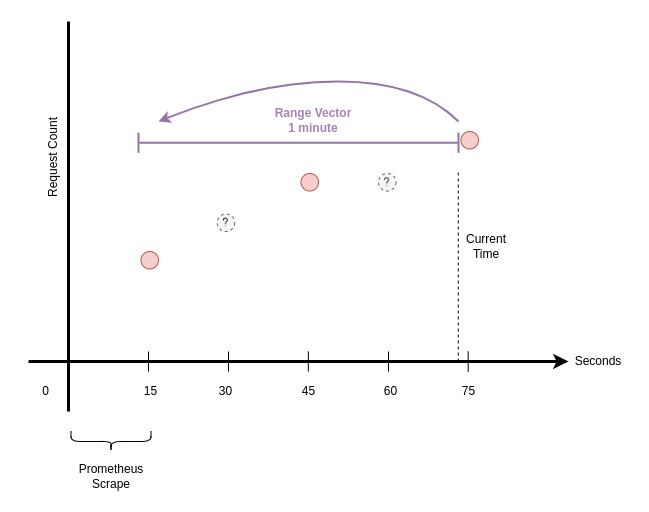
Delta
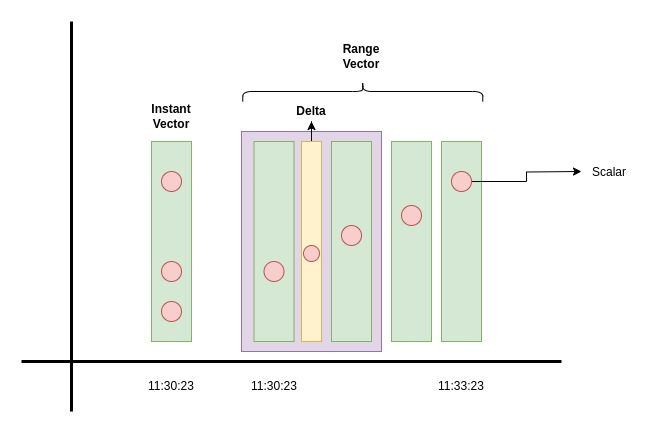
Example
Kube-state-metrics
https://github.com/kubernetes/kube-state-metrics